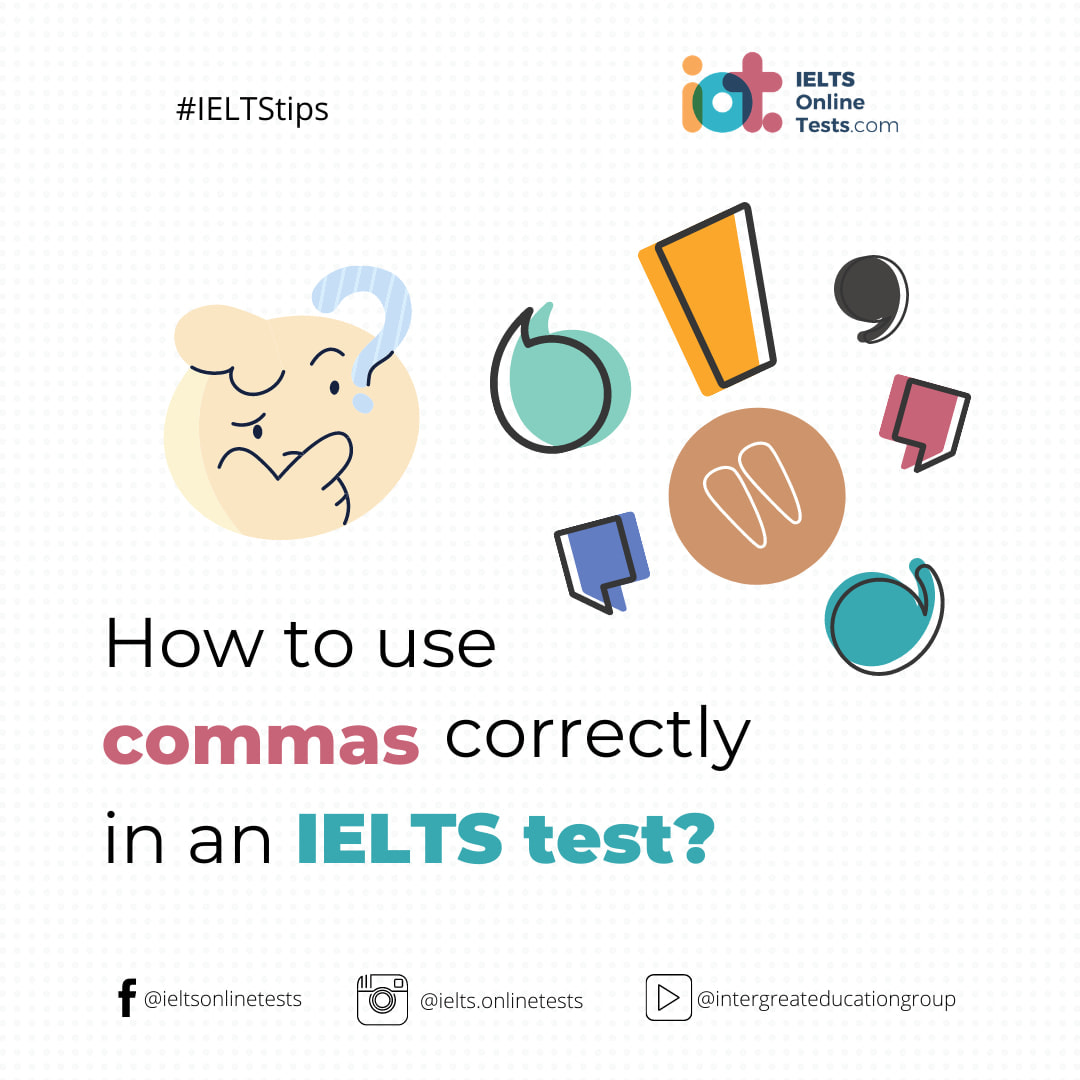
How to Use Commas Correctly in an IELTS Test
One of the common mistakes in IELTS writing is the wrong use of punctuations, especially the comma (,). Being able to use basic punctuation marks in English is absolutely essential.
Let’s take a look at several basic rules for using comma properly.
1. In lists
Commas are used to separate words and phrases when there are three or more of them.
Examples:
People today often have many unhealthy habits including eating food that is high in calories, having a sedentary lifestyle, and drinking alcohol to excess.
TOP TIP
A lot of students end lots with “etc” – however, this is not necessary. It is better to have THREE ITEMS in a list and simply end after the third.
People often eat fast food, such as burgers, french fries, fried chicken and etc. --> WRONG
People often eat fast food, such as burgers, french fries, and fried chicken. --> RIGHT
2. Before coordinating conjunctions
Use commas before coordinating conjunctions such as and, but, or, and so in compound sentences.
Examples:
Perhaps no budget is without some fat, but university officials argue that their unique function requires special standards of evaluation.
3. Separate multiple adjectives modifying the same noun
We use commas to separate a series of adjectives which modify the same noun.
Example: The tall, cute lady is my girlfriend.
4. After introductory adverbs, phrases, or clauses
Use commas after the following types of introductory adverbs or phrases.
- After introductory adverbs
Example: Ironically, the same people who persuaded him to run for office campaigned against him when he sought a second term..
- After transitional words
Example: Many, consequently, struggle when their first enter the workplace
- After prepositional phrases
Example: In the past, it took much more time for people to travel outside the country.
- After words, such as “say” and before a quotation
Example: John said, “I really hate when it’s hot outside.”
Commas are very common in English writing and there are more uses than the ones I have listed above. However, these are the most important for you to know. You should study these rules and practice writing example sentences of your own. When writing for the IELTS exam, you should ask yourself whether your sentences fall into the categories above, and thus whether you have included commas in the right place or not.
If you need help with your IELTS writing, please check out our Writing Evaluation Service: https://ieltsonlinetests.com/writing-evaluation-service




